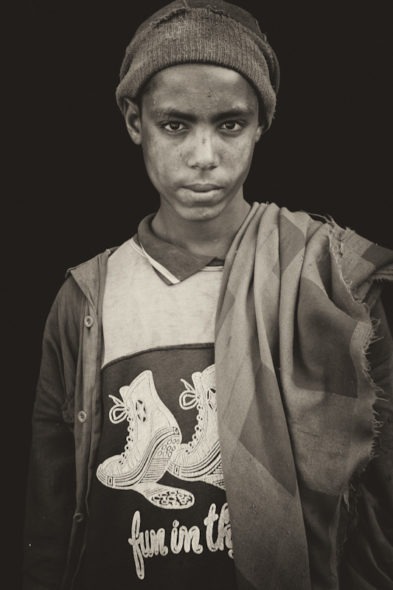For many years, I have brought this question up during the classes I teach, delighting in the hearing the discussion that would follow. A still photograph is, after all, a replication of a slice of time, right? But yet, a still image also takes on meaning from the perspective by which it is viewed. Connotations derived from our own experiences “color” the image, and attaches attributes to the photo. And in this digital age, where post processing can greatly alter an image from its original state without notification to the viewer, how can we ever trust that a photograph truly reflects reality?
The moment I enter a scene and select a subject, the decision making begins. How I angle the camera, which background I choose, how I like to see the light fall on the person’s face are all elements that can greatly affect the mood of the image. I know when a photograph might evoke emotion and when it might have less appeal to a viewer, and I deliberately discern how I want to construct that image.
People frequently tell me that my photographic style celebrates the integrity of the subject and preserves authenticity. While I certainly strive for more of a connection between me and the subject rather than the camera and the subject, I still believe that a photograph never tells the full story and by the time an image is made into a print, so many decisions were made that the viewer is only seeing one fraction of reality, and this is from the photographer’s and viewer’s standpoints, not from the subject’s.
I have a trick I use that works like a charm every time I want to shift the power from camera operator to the subject. I wait patiently for this to occur before I press the shutter release, resulting in what many refer to as “capturing the soul of the person”. This look in their eyes has nothing to do with photography, and everything to do with humanity and our interplay as human beings relating to each other, regardless and usually despite of the overlay of language. However, even with this practiced altruism, I still walk away feeling like there is so much more I could portray about the person I am photographing. I never feel satisfied that I have “captured” someone. Never.
I leave every single encounter with a longing. A heart wrenching longing that is insatiable and tormenting. I leave something behind, many things, when I photograph someone. Like a lover left on the shores of a far away country, these people I have photographed play out their stories in my head, one by one, over and over, begging to not be misunderstood.
